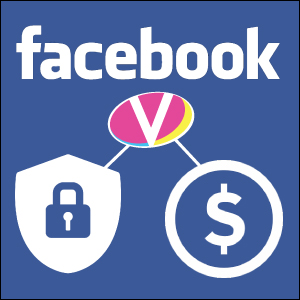Over the last several months, Facebook has been slowly rolling out their monetization policies to select partner pages. In an effort to organize and create a solid foundation for their video monetization, the social media giant is collecting thousands of reference files first, before enabling monetization for all users. However, once Facebook monetization is unveiled for everyone, it will offer creators a whole new platform to generate earnings on. Activated Facebook creators are already seeing ad revenue and viewership comparable to YouTube, for example, video creators like Laura Clery are capitalizing on this new opportunity to double their online presence.
For non-Facebook partners, Vydia is proactively ingesting your original content in order to prepare for when Facebook allows the majority of its creators’ pages to monetize. This step is vital to allow for an easier transition and ultimately will help you to get paid faster. According to Facebook, only pages in good standing may be eligible to turn on monetization; users can not have any videos in conflict and they must have their rights and policies asserted on their own content. You can easily tell if you have any conflicts by checking your Vydia Dashboard which shows users all of their ownership conflicts so that outstanding conflicts may be addressed and resolved.
Vydia has also launched two new policy options for Facebook – Monetize and Block. To take advantage of Facebook monetization; go to your Creator’s profile, click edit and select the blue gear next to Facebook. Be sure that Social and Rights sync is enabled first (the switch at the top should be blue to indicate that the feature is on) and then choose either “Monetization” or “Block”, finally click “Update” to save.
Monetize
Facebook monetization works similarly to YouTube where revenue is generated by advertisements served on videos uploaded to the platform. Facebook differs in that they don’t utilize pre-roll ads, instead, in-stream ads (also known as mid-roll ads) are placed during a user’s video. Earlier this year, Facebook announced several new updates for video monetization which included two different kinds of ads and a tool to help video creators extend their reach on the social media platform. Advertisements for videos on Facebook are embracing “Ad Breaks” in the middle of both live videos and in on-demand content. For live videos, an ad break option will appear after four minutes of broadcasting to a minimum of 300 viewers. The notification will appear alongside the viewer comments, after initiating the ad break, up to 20 seconds of advertisements will play. Creators will then have the option to take more ad breaks every five minutes during their broadcast. For on-demand videos, creators can choose at what point they want the ad to appear after 20 seconds of video play, giving creators more control over their video plus ability to create more engaging content.
Block
Vydia users have access to our Block Policy. This policy is available for all of our digital platforms and prevents others from taking content and publishing it as their own. This policy makes it possible to drive traffic to your specific page which in turn will increase view counts as well as engagement and ad-revenue. When a user connects their Facebook page to their Vydia account, Vydia will whitelist that particular page (meaning that this page has permission to publish content). When block is selected on a video within the Vydia dashboard, only the Facebook page that is connected will be able to publish the video, this prohibits the video from appearing anywhere else (including the content owner’s personal Facebook account – if you’re having any problems our Customer Service team is available to help).
With over 1.2 billion users, Facebook has a massive audience constantly waiting for new content. The shareability of videos on the platform makes it easier for content to go viral, and now with monetization in the works, creators have the chance to earn as much as popular YouTubers. To stay ahead of the curve, protect and monetize your content early before Facebook monetization is available for everyone. You never know what could go viral next!
To stay up-to-date with the latest technology news and updates to our own platform, make sure you follow our weekly blogs.
